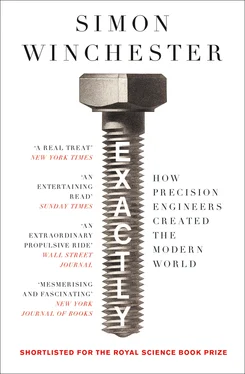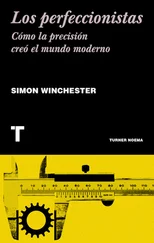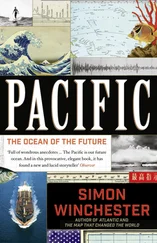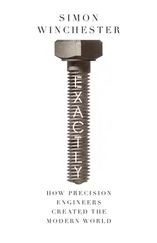Then came John Wilkinson and his new idea. He decided that he would cast the iron cannon not hollow but solid. This, for a start, had the effect of guaranteeing the integrity of the iron itself—there were fewer parts that cooled early, for example, as would happen if there was a form installed to create the inner tube. A solid cylindrical chunk of iron, heavy though it might have been, could, if carefully made, come out of the Bersham furnaces without the air bubbles and spongy sections (“honeycomb problems,” as they were called) for which hollow-cast cannon were then notorious.
Yet the true secret was in the boring of the cannon hole. Both ends of the operation, the part that did the boring and the part to be bored, had to be held in place, rigid and immovable. That was a canonical truth, as true today as it was in the eighteenth century, for to cut or polish something into dimensions that are fully precise, both tool and workpiece have to be clasped and clamped as tightly as possible to secure immobility. Moreover, in the specific case of gun barrels, there could be no allowable temptation for the boring tool to wander while the bore was being made. This was the reason the cannons were cast solid rather than hollow. To do otherwise was to risk explosive catastrophe.
In the first iteration of Wilkinson’s patented process, this solid cannon cylinder was set to rotating (a chain was wrapped around it and connected to a waterwheel) and a razor-sharp iron-boring tool, fixed onto the tip of a rigid base, was advanced directly into the face of the rotating cylindrical workpiece. This created a brand-new hole, straight and precise, as the boring tool was pushed directly into the iron. “With a rigid boring bar and the bearing true,” wrote a recent biographer of Wilkinson’s, somewhat poetically, “accuracy was bound to ensue.” In later versions, it was the cannon that remained fixed and the tool, itself now connected to the waterwheel, that was turned. In theory, and provided that the turning bar itself was rigid; that it was supported at both ends and so maintained its rigidity; and that, as it was advanced into the hole it was boring into, the cylinder face did not bend or turn or hesitate or waver in any way, a hole of great accuracy could be created.
Indeed, that is just what was obtained. Cannon after cannon tumbled from the mill, each accurate to the measurements the navy demanded, each one, once unbolted from the mill, identical to its predecessor, each one certain to be the same as the successor that would next be bolted onto it. The new system worked impeccably from the very start, encouraging Wilkinson to apply for and indeed receive his famous patent.
Instead of an eccentrically drilled-out version of a previously cast hole in a cannon barrel that was already peppered with flaws and weak spots, and which, if it fired at all, would hurl the ball or chain shot or shell wildly through the air, the Royal Navy now received from the Bersham works wagonloads of guns that had a much longer shelf life and would fire their grapeshot or canister shot or explosive shells exactly at their intended target. The improvements were all thanks to the efforts of John Wilkinson, ironmaster. Already a wealthy man, Wilkinson prospered mightily as a result: his reputation soared, and new orders flooded in. Soon, his ironworks alone were producing fully one-eighth of all the iron made in the country, and Bersham was firmly set to be a village for the ages.
Yet what elevates Wilkinson’s new method to the status of a world-changing invention, and Bersham’s consequent elevation from the local to the world stage, would come the following year, 1775, when he started to do serious business with James Watt. He would then marry his new cannon-making technique, though this time without a brand-new patent, incautiously, with the invention that Watt was just then in the throes of completing, the invention that would ensure that the Industrial Revolution and much else besides and beyond were powered by the cleverly harnessed power of steam.
The principle of a steam engine is familiar, and is based on the simple physical fact that when liquid water is heated to its boiling point it becomes a gas. Because the gas occupies some 1,700 times greater volume than the original water, it can be made to perform work. Many early experimenters realized this. A Devon-born ironmonger named Thomas Newcomen was the first to turn the principle into a product: he connected a boiler, via a tube with a valve, to a cylinder with a piston, and the piston to a beam on a rocker. Each time steam from the boiler entered the cylinder, the piston was pushed upward, the beam tilted, and a small amount of work (a very small amount) could be performed by whatever was on the far end of the beam.
Newcomen then realized he could increase the work by injecting cold water into the steam-filled cylinder, condensing the steam and bringing it back to 1/1,700 of its volume—creating, in essence, a vacuum, which enabled the pressure of the atmosphere to force the piston back down again. This downstroke could then lift the far end of the rocker beam and, in doing so, perform real work. The beam could lift floodwater, say, out of a waterlogged tin mine.
Thus was born a very rudimentary kind of steam engine, almost useless for any application beyond pumping water, but given that early eighteenth-century England was awash with shallow mines that were themselves awash with water, the mechanism proved popular and useful to the colliery community. The Newcomen engine and its like remained in production for more than seventy years, its popularity beginning to lessen only in the mid-1760s, when James Watt, who was then employed making and repairing scientific instruments six hundred miles away at the University of Glasgow, studied a model of its workings closely and decided, in a series of moments of the purest genius, that it could be markedly improved. It could be made efficient, he thought. It could possibly be made extremely powerful.
And it was John Wilkinson who helped to make it so—once, that is, Watt had had his strokes of the purest genius. These can be summed up simply enough. For weeks, alone in his rooms in Glasgow, Watt puzzled over a model of the Newcomen engine, a machine famed for being so woefully inadequate, so inefficient, so wasteful of all the heat and energy expended upon it. Watt, patiently trying out various ways to improve on Newcomen’s invention, is reported to have remarked wearily that “Nature has a weak side, if only we can find it out.”
He finally did so, according to legend, one Sunday in 1765, as he was taking a restorative walk through a park in central Glasgow. He realized that the central inefficiency of the engine he was examining was that the cooling water injected into the cylinder to condense the steam and produce the vacuum also managed to cool the cylinder itself . To keep the engine running efficiently, though, the cylinder needed to be kept as hot as possible at all times, so the cooling water should perhaps condense the steam not in the cylinder but in a separate vessel , keeping the vacuum in the main cylinder, which would thus retain the cylinder’s heat and allow it to take on steam once more. Moreover, to make matters even more efficient, the fresh steam could be introduced at the top of the piston rather than the bottom, with stuffing of some sort placed and packed into the cylinder around the piston rod to prevent any steam from leaking out in the process.
These two improvements (the inclusion of a separate steam condenser and the changing of the inlet pipes to allow for the injection of new steam into the upper rather than the lower part of the main cylinder)—improvements so simple that, at this remove, they seem obvious, even though, to James Watt in 1765, they were anything but—changed Newcomen’s so-called fire-engine into a proper and fully functioning steam-powered machine. It became in an instant a device that in theory could produce almost limitless amounts of power.
Читать дальше












